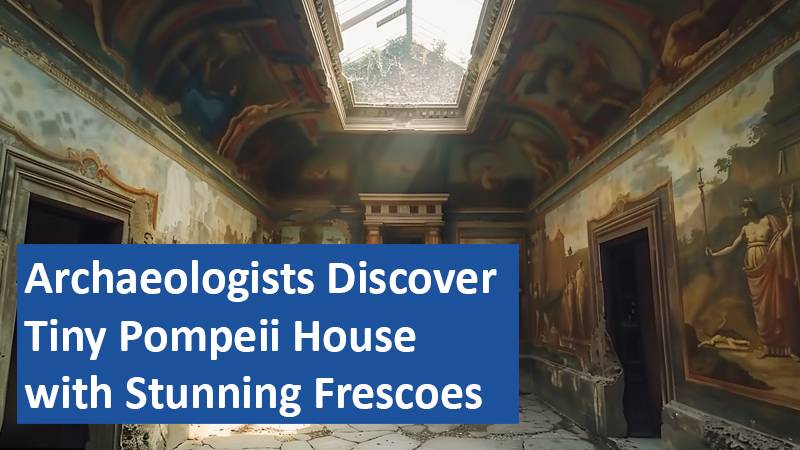A newly uncovered house in Pompeii, though small, reveals an intricate collection of frescoes that offer a glimpse into the art and architecture of ancient Rome. Named the “House of Phaedra” for the mythological figure depicted on its walls, this compact residence is unique for its elaborate paintings despite its limited space. Departing from traditional Roman architecture, the house lacks an atrium, showcasing a different style of design from the first century. Its carefully preserved details highlight a shift in architectural trends of the time.
By Julian James
Distinct Design Without a Roman Atrium

Unlike most Roman homes of its era, the House of Phaedra does not feature a central atrium, a common focal point in Roman architecture. Instead, it is designed with a compact layout that emphasizes elaborate decorations rather than spacious interiors. This architectural choice gives valuable insight into evolving design trends in Pompeii during the Roman Empire. Although small, the house impresses with its finely preserved frescoes, matching the grandeur of much larger villas in the area.
Exquisite Mythological Frescoes
The detailed frescoes depict scenes from Greek mythology, including the tragic story of Phaedra and Hippolytus, who rejected her love. Other artworks illustrate a satyr and nymph in an encounter, alongside what is believed to be Venus and Adonis. The vivid colors and precision of these frescoes reflect the high level of skill in Roman painting at that time. These mythological artworks make the House of Phaedra one of Pompeii’s more remarkable finds, preserved by volcanic ash from the eruption of Mount Vesuvius in 79 A.D.
A City Preserved Under Volcanic Ash
The eruption of Mount Vesuvius in 79 A.D. buried Pompeii and its surroundings under a thick layer of ash, preserving buildings and people in remarkable detail. Thousands lost their lives in the sudden disaster, unaware they lived near one of Europe’s largest volcanoes. This ash layer has provided archaeologists with an unparalleled view of Roman life, as much of Pompeii remained untouched by time. The city stands as a unique record of Roman culture, preserved for centuries beneath volcanic debris.
Natural and Decorative Themes Enhance the Art
Alongside mythological scenes, the house features finely detailed patterns inspired by nature, adding to the harmony of the decor. These smaller motifs showcase the craftsmanship of Roman artisans, who filled every surface with intricate designs. Remarkably well-preserved, the frescoes reflect the Romans’ dedication to beauty and artistic skill. The House of Phaedra serves as a lasting testament to the cultural richness and artistry of ancient Rome.
The House of Phaedra’s unique design and extraordinary frescoes make it a significant find, deepening our understanding of Pompeii’s history and artistry.
Based on information from www.reuters.com and own research.